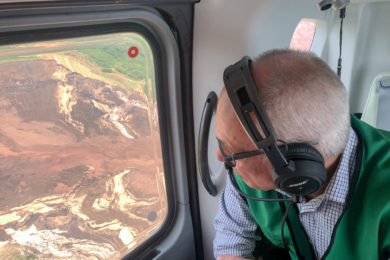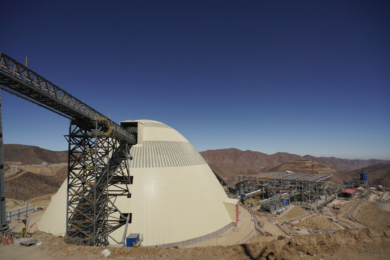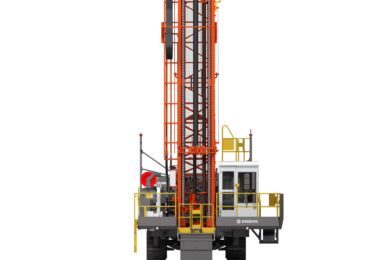Dr Bruno Oberle, Chair of the Global Tailings Review has announced the scope of the review and the next steps including his intention to visit local communities living near tailings storage facilities. The review will be divided into three phases. The first, a research phase, includes engagement with communities living and working near tailings storage facilities and will evaluate current best practices from the mining sector and other industries. This research will inform drafts of the international tailings standard and a related report which will be published at the end of the summer.
The second phase will centre around a broad consultation on these draft documents. It is expected that there will be regional meetings and an online consultation in order to canvas as many views as possible. In the final phase, Dr Oberle will consider the consultation responses and develop an international standard for tailings storage facilities and a report by the end of 2019. The report will outline broader recommendations to support uptake and implementation of the standard. The standard and report will be published in early 2020.
The International Council on Mining and Metals (ICMM), the United Nations Environment Programme (UNEP) and the Principles for Responsible Investment (PRI) co-convened the Global Tailings Review to establish an international standard for the safe management of tailings storage facilities that can be applied to all tailings dams wherever they are located and whoever operates them. Broadly the review will evaluate current global good practices in the mining industry, and beyond, as well as evidence and lessons learned from catastrophic failures of tailings storage facilities at Brumadinho (2019), Mariana (2015), Mount Polley (2014) and others to develop the standard.
Over the next two months, Dr Oberle will visit tailings storage sites around the world, collecting feedback from a wide range of groups, including local communities and workers. This week, Dr Oberle will travel to Brazil to meet people affected by the recent tragedy at Brumadinho, where a tailings dam failure resulted in 243 fatalities with 25 people still missing, and by the 2015 Samarco incident that caused 19 deaths and widespread environmental destruction.
Implementation of the new international standard will be mandatory for all ICMM company members, and the co-convenors of the review will also work to encourage non-ICMM members to implement the standard.
Dr Oberle stated: “Engaging with people from civil society, academia, business and multilateral institutions has helped me to set out an ambitious work plan for the independent Global Tailings Review. I feel that it is important that I witness the impact of the tragedy at Brumadinho and listen to affected communities. I will be doing this as my first priority. After this, I will prepare a draft report and standard which will be published by the end of the summer. There will be widespread consultation on these draft findings in September and October. The responses from this will inform and strengthen the final standard and report before their publication early next year.”
A more detailed scope of the review has also been outlined as follows:
Classification of tailings storage facilities (TSFs):
- What classification systems already exist for TSFs and what are the perceived strengths and weaknesses of each?
- What relative weights are afforded to the consequences of failure in each of these classification systems and how does that translate into requirements for emergency planning and preparedness?
- What are the public reporting / disclosure requirements associated with each classification system to regulators and other stakeholders (including local communities and investors)?
- Broadly speaking, how effective have these classification systems been in preventing the failure of TSFs or mitigating their effects?
- What would a consequence-based TSF classification system look like, that could be practically applied irrespective of geographic location or the existing requirements of classification systems, and would be resilient to climate change?
- What would the requirements for independent review (see below) or emergency planning and preparedness look like for each classification category?
Independent review of TSFs:
- What independent review processes already exist for TSFs (e.g. independent tailings review boards, independent geotechnical review boards, engineers of record) and under what circumstances are these applied?
- What testing, monitoring and inspection regimes apply to TSFs, how do these relate to the design of the TSF (e.g. upstream, downstream, centreline), and to the requirements for independent review?
- What are the perceived strengths and weaknesses of existing independent review processes and testing and inspection regimes?
- What would the requirements for independent review look like for each classification category (see above)?
Behavioural, cultural, and structural factors:
- What are the cultural, behavioural and incentive barriers within companies that block better management of tailings storage facilities (TSFs)?
- What structures and mechanisms for learning and accountability exist in our own industry and other industries and what could we learn from them?
- What are the formal and continuing education requirements, as well as training, that are available for those who manage TSFs, both within companies and externally?
- What are the structural causes of and possible remedies for the shortage of experts (inadequate indemnification, consultant industry consolidation)?
- How could companies better engage with communities about the possible consequences of failure, to encourage better preparedness?
- Since the release of ICMM’s position statement on tailings governance, what changes have been instituted relating to the governance of tailings storage facilities, and is change management being better managed?
- How can company tailings experts be more “empowered” through internal governance structures, and should a more rigorous “competent persons” approach be considered, similar to ore reserves sign off?
- What changes should be considered to enable significant risks relating to tailings storage facilities to be elevated to senior management, e.g. Executive Committee level?










